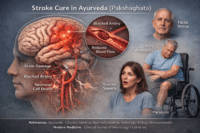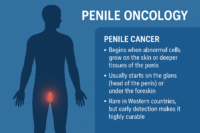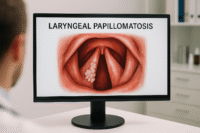- Herpesviruses are categorized into three groups:
- Prevention and Treatment in Allopathy Medicine:
- Herpes Cure in Herbal Medicines
- Ayurveda Formula PART One To Cure for HSV 1 and HSV 2 Permanently
- All The Variants in Detail With Example
- Varicella-Zoster Virus:
- let’s explore CMV(Cytomegalovirus)
- Epstein-Barr virus (EBV)
- Human Herpesvirus 6 and 7
- Human Herpesvirus 8
- Grouping of Herpesviruses
There are over 100 types of herpesviruses, but only eight of them mainly infect humans. These eight include herpes simplex virus types 1 and 2, the virus that causes chickenpox, cytomegalovirus, the Epstein-Barr virus, two types of human herpesvirus 6, human herpesvirus 7, and the virus associated with Kaposi’s sarcoma (human herpesvirus 8).
Think of it like this: There are over 100 different kinds of apples, but only eight of them are the ones you usually find in the grocery store.
There is also a virus from monkeys, called B virus, that can occasionally infect humans.
Imagine that most dogs don’t bite, but there is a particular breed that might bite humans sometimes. The B virus is like that particular breed—most monkey viruses don’t affect humans, but this one can.
All herpesviruses can hide in certain tissues in your body and stay there without causing symptoms, but each type of herpesvirus hides in a different place. It’s like a burglar who sneaks into your house and hides in a specific room. Each burglar (virus) has a favorite hiding spot (tissue), like under the bed in the bedroom or in the closet in the living room.
Herpesviruses are categorized into three groups:
α (Alpha) Herpesviruses: This group includes herpes simplex virus types 1 and 2, and the varicella-zoster virus. These viruses multiply quickly, cause damage to cells grown in lab cultures, and can infect many different species. Think of these viruses like a fast-spreading fire that can quickly damage many different types of plants in a forest.
β (Beta) Herpesviruses: This group includes cytomegalovirus and human herpesviruses 6 and 7. These viruses take longer to multiply and can only infect a limited range of species. These viruses are like a slow-growing plant that only thrives in certain types of soil.
γ (Gamma) Herpesviruses: This group includes the Epstein-Barr virus and human herpesvirus 8. These viruses have a very limited range of species they can infect. These viruses are like a rare flower that can only grow in one specific spot in the world.
Let’s understand Transcription, Genome Replication, and Capsid Assembly:
Immediate-Early Genes: Think of this as the virus sneaking into a human cell and starting to set up its “command center” (like setting up the brain of the operation). This part of the virus tells the cell to make certain proteins that will help control the virus’s activities.
Early Genes: Once the command center is set up, the virus instructs the cell to make tools (enzymes) needed to copy its DNA. This is like the virus setting up a machine inside your cell to create more copies of itself.
Late Genes: Finally, the virus tells the cell to build the outer parts of the new virus particles. This is like assembling the outer shell and parts of the virus.
Virion Formation and Release (Virus Spreading): After the virus is fully assembled, it wraps itself in a protective covering as it moves out of the cell’s nucleus. This is like the virus putting on a coat before leaving the cell. The virus then travels through the cell, using the cell’s transportation system (the Golgi complex) to reach the cell’s outer edge. When the virus particles are released from the cell, the cell dies. This is like the cell bursting open, releasing the virus, and then the cell can’t function anymore and dies.
Latent State (Virus Hiding in the Body): Sometimes, instead of making more viruses and killing the cell, the virus decides to hide inside certain cells in your body. It goes into a “sleeping” or inactive state, where it doesn’t cause any problems. This is like the virus hiding out in your nerve cells, waiting quietly. The virus can stay hidden for a long time, but it can wake up and start making more viruses again whenever it wants. This is like the virus suddenly waking up and starting the whole process over again, though we don’t fully understand what triggers it to wake up.
Let’s understand this with a Human Body Example:
Cold Sores (Herpes Simplex Virus 1): When you first get infected with herpes simplex virus 1 (HSV-1), the virus enters the cells around your mouth. It takes control of these cells to make more copies of itself (just like setting up a factory). As the virus multiplies, it damages the cells, causing a cold sore to appear. Eventually, the virus leaves the damaged cells and spreads. However, after the initial infection, the virus hides in the nerve cells near your mouth (this is the latent state). It stays there, not causing any trouble, until something triggers it (like stress or a weakened immune system). When triggered, the virus wakes up and starts the process again, causing another cold sore to appear.
Prevention and Treatment in Allopathy Medicine:
Vaccines: There is now a vaccine available in the United States to prevent infections caused by the varicella-zoster virus, which is the virus that causes chickenpox and shingles. Vaccines for herpes simplex virus 2 (which causes genital herpes) and cytomegalovirus are being tested in large-scale studies to see how well they work.
Passive Immunization: Another way to prevent herpesvirus infections is by giving someone antibodies directly (called passive immunization). This can help protect against infection or can be used alongside antiviral drugs to treat the infection.
Treatment:
Herpes Simplex Virus 1 & 2 and Varicella-Zoster Virus: These infections are currently the easiest to treat. Medicines like acyclovir, valaciclovir, and famciclovir are commonly used and have been approved for this purpose. However, these medicines do not cure it. If you want to get a cure of HSV 1 and HSV 2, then buy some herbal ingredients from the open market and prepare the medicines to cure completely.
Cytomegalovirus Retinitis: For this eye infection caused by cytomegalovirus, the drug ganciclovir is used.
B Virus: This virus, which sometimes infects humans, can also be treated with the same drugs mentioned above.
Epstein-Barr Virus and Human Herpesvirus 6, 7, and 8: Unfortunately, there is no specific treatment available in Allopathy yet for infections caused by these viruses. There is Herbal medicine (Ayurvedic & Unani) to cure it, but these need to be prepared in a proper facility under the guidance of an ayurvedic doctor based on patients’ health status and severity of the infection.
Prevention Example: If you want to avoid getting chickenpox or shingles, you can get a vaccine that helps your body build up immunity against the varicella-zoster virus. In the future, there might also be vaccines available to protect against genital herpes (caused by herpes simplex virus 2) or cytomegalovirus, but these are still being tested.
Treatment Example: If you have a cold sore (caused by herpes simplex virus 1) or shingles, your doctor can give you medicines like acyclovir to help control the infection and reduce symptoms. However, if you have an infection like Epstein-Barr virus (which can cause mono), there isn’t a specific medicine to treat it yet in Allopathy Medicines.
Herpes Cure in Herbal Medicines
Ayurveda Formula PART One To Cure for HSV 1 and HSV 2 Permanently
A. Gandhak Rasyan: Take 2 tablets twice daily, or Neemol (Containing Pure Gandhak): Take 2 tablets three times daily.
B. Vyadhihar Rasayan: 125 mg twice daily.
C. Heerak Bhasma: 5 mg twice daily.
D. Shila Sindoor: 5 mg twice daily.
For Patients with Gas and Acidity:
1.Sutshekhar Ras: 1 tablet twice daily.
2.Mukta Shukti Bhasma: 250 mg twice daily.
3.Panchsakar Churna: 3 grams twice daily.
All The Variants in Detail With Example
Genomic Homology: Herpes simplex virus 1 (HSV-1) and herpes simplex virus 2 (HSV-2) are related, but their genetic makeup is only about 50% similar. Despite this difference, they behave in many similar ways.
Symptoms and Conditions:
Mucocutaneous Manifestations: These are symptoms that affect the skin and mucous membranes:
Gingivostomatitis: This is an infection of the gums and mouth, often seen in children, causing painful sores.
Herpes Genitalis: This refers to genital herpes, which causes sores or blisters in the genital area.
Herpetic Keratitis: This is an eye infection that affects the cornea, leading to pain, redness, and possible vision problems.
Dermal Whitlows: These are painful blisters on the fingers or hands caused by the herpes virus.
Other Serious Conditions:
Neonatal Herpes: This occurs when a newborn baby gets infected with the herpes virus, which can be very serious.
Herpes Encephalitis: This is a dangerous infection where the herpes virus causes inflammation in the brain, leading to severe illness.
HSV-1 vs. HSV-2: Imagine two siblings who look different from each other (only 50% similar in appearance), but they both have the same habits and behaviors. This is like HSV-1 and HSV-2—they aren’t identical, but they cause similar types of infections.
Mucocutaneous Manifestations Example: If someone has a cold sore (gingivostomatitis) on their lip caused by HSV-1, it’s similar to the sores that HSV-2 might cause in the genital area (herpes genitalis). Both viruses can also cause eye infections (herpetic keratitis) or blisters on the fingers (dermal whitlows).
Serious Conditions Example: A baby born to a mother with active herpes might develop neonatal herpes, a very serious condition. Similarly, if the herpes virus spreads to the brain, it can cause herpes encephalitis, which is also very dangerous.
How the Virus Works:
Initial Infection: When the herpes virus first infects the body, it starts by multiplying in the outer skin cells (epithelial cells). This causes a small blister (vesicle) to form on a red, inflamed area of the skin (erythematous base).
Spreading to Nerves: After this initial infection, the virus travels up the sensory nerves to a group of nerve cells called the dorsal root ganglia. Here, the virus multiplies for a short time and then goes into a “sleeping” or latent state.
Reactivation and New Outbreaks: If the virus becomes active again later (reactivated infection), it travels back down the nerves from the ganglion to the skin or mucous membranes. This causes new blisters or sores to appear on the skin or mucous areas, like the mouth or genitals.
Cold Sore Example: Imagine you get a cold sore on your lip (caused by the herpes virus). First, the virus makes the skin cells on your lip produce a painful blister. Afterward, the virus hides in the nerve cells near your lip, staying dormant for a while. Later, if the virus wakes up (maybe because of stress or illness), it travels back to your lip and causes another cold sore in the same area. This process can happen repeatedly over time.
Let’s understand the body’s defensive mechanism and Transmission:
Immune System Defenses: The body uses several types of immunity to fight off herpes simplex virus infections:
Interferon: This is a protein that helps the body’s cells defend against viruses.
Humoral Immunity: This involves antibodies in the blood that target and neutralize the virus.
Mucosal Immunity: This type of immunity protects the surfaces of the body that are exposed to the outside, like the inside of the mouth and genital areas.
Cellular Immunity: This involves specific immune cells that attack and destroy infected cells.
Severity in Immunocompromised People: Herpes simplex virus infections can be much more severe in people with weakened immune systems, such as those with HIV or those undergoing chemotherapy.
Transmission of Herpes Simplex Virus 1 and 2:
Herpes Simplex Virus 1 (HSV-1): This virus is mainly spread through oral contact, like kissing and if blood gets transmitted with close contact in the both bodies. For Example You have brushed your teeth and due to friction there is minute cut which can’t be seen through bare eyes but there is cut and someone kisses opposite person and even the opposite person has the same minute cut then the viruses will get transmitted and the same rule applicable with all STDs Viruses
Herpes Simplex Virus 2 (HSV-2): This virus is mainly spread through genital contact, usually during sexual activity.
Intimate Contact Required: For the virus to spread, close, personal contact is necessary, such as kissing for HSV-1 or sexual contact for HSV-2.
Immune System Example: Imagine your body is a fortress with different defenses. Interferons are like alarm signals that warn the fortress of an attack. Humoral immunity is like archers shooting arrows (antibodies) at the enemy (virus). Mucosal immunity is like a shield protecting the outer walls (like the skin inside your mouth). Cellular immunity is like soldiers who attack and destroy any enemies that get inside the fortress. If the fortress is weak (like in immunocompromised people), the virus can do more damage.
Transmission Example: If someone has a cold sore from HSV-1, they can pass the virus to another person by kissing them. If someone has genital herpes from HSV-2, they can pass the virus to their partner during sexual activity. The virus needs close contact to spread—it can’t just jump from one person to another without that intimate contact. It needs blood transmission.
Varicella-Zoster Virus:
Primary Infection (Chickenpox): When someone is first infected with the varicella-zoster virus, it causes chickenpox. This usually happens in childhood and results in an itchy, blister-like rash all over the body.
Reactivation (Shingles): Later in life, typically in adults, the virus can become active again. When this happens, it causes shingles (herpes zoster). Shingles appear as a painful, blistering rash that follows the path of a specific nerve on one side of the body (called a dermatomal distribution). Along with the rash, people often experience severe nerve pain (acute neuritis).
Chickenpox Example: Imagine a child who gets chickenpox—this is their first encounter with the varicella-zoster virus. They develop an itchy rash with red spots and blisters that spread all over their body. After they recover, the virus doesn’t leave their body; it just goes into hiding in their nerve cells.
Shingles Example: Years later, as an adult, the virus might “wake up” and cause shingles. This time, instead of a widespread rash, it appears as a painful line of blisters along a specific area of the skin, like a stripe. This stripe follows the path of a nerve, and the pain can be quite intense, making shingles much more uncomfortable than chickenpox.
How does it spread and transmit? Let’s understand it:
The varicella-zoster virus is mainly spread through tiny droplets in the air, like when someone with the virus coughs or sneezes. The virus first multiplies in the back of the throat and nose (nasopharynx).
Infection in People Without Immunity: If someone who has never had chickenpox or been vaccinated (seronegative) is exposed to the virus, it spreads through their bloodstream (viremia), leading to chickenpox.
Latency and Reactivation: After the initial infection, the virus hides in the nerve cells (dorsal root ganglia) and stays dormant. If it becomes active again later, it travels down the nerves to the skin, causing shingles.
Body’s Defense System Against the Virus:
The body uses several defense mechanisms to fight the virus, just like it does with herpes simplex virus:
Interferon: A protein that helps cells defend against the virus.
Cellular and Humoral Immunity: These involve immune cells and antibodies working together to fight off the infection.
Risk for Immunocompromised Individuals: In people with weakened immune systems, the reactivated virus can spread throughout the body and cause more severe illness (disseminated disease).
Epidemiology:
Contagiousness: The varicella-zoster virus is extremely contagious. Almost everyone (about 95 percent of adults) has been infected at some point, as shown by blood tests (serologic evidence).
Transmission Example: Imagine a child with chickenpox sneezes, releasing droplets into the air. If someone nearby who has never had chickenpox breathes in these droplets, the virus can enter their body and cause chickenpox.
Latency and Reactivation Example: After recovering from chickenpox, the virus doesn’t leave the body. It hides in the nerve cells and stays there for years. Later in life, if the immune system becomes weaker, the virus can wake up and cause shingles by traveling along the nerves to the skin.
Immune Defense Example: Your immune system is like a team of defenders. Interferons are the messengers alerting the body to the virus, while immune cells and antibodies work together to fight the infection. If the immune system is weak (like in someone with HIV or cancer), the virus can spread more easily and cause a more severe illness.
Contagiousness Example: Because the varicella-zoster virus spreads so easily, almost everyone you know has had chickenpox at some point, even if they don’t remember it. This is why nearly all adults show signs of past infection in their blood tests.

let’s explore CMV(Cytomegalovirus)
CMV is a common virus that most people carry without knowing it because it usually doesn’t cause any symptoms. For most people, it’s harmless. However, it can cause issues in babies and people with weakened immune systems.
Cytomegalovirus (CMV) Clinical Manifestations: CMV can cause different health issues depending on the situation
Symptoms of CMV:
No Symptoms for Most: Most people don’t realize they have CMV because it often doesn’t cause any noticeable symptoms.
Flu-Like Symptoms: If symptoms do appear, they might feel like the flu, including:
High fever, Aching muscles, Tiredness, Skin rash, Feeling sick, Sore throat, Swollen glands.
Genital Blisters: In adults, CMV can also cause genital blisters, similar to the symptoms caused by herpes simplex virus types 1 and 2 (HSV-1 and HSV-2).
Recovery: These symptoms typically go away on their own within about 3 weeks without needing treatment.
When to See a Doctor:
Non-Urgent: You should see a doctor if you have CMV symptoms and are either:
Pregnant or Have a weakened immune system (e.g., due to chemotherapy).
The doctor might do some tests to see if you have CMV.
Complications of CMV:
Congenital CMV: If a baby is born with CMV, it’s called congenital CMV. Most babies with congenital CMV won’t have symptoms, but sometimes they do, which might include:
Rash, Yellow skin and eyes (jaundice), Low birth weight, Smaller head than normal (microcephaly), Seizures, Hearing problems in one or both ears, Eye issues, Liver and spleen problems.
Testing and Follow-Up: Babies born with congenital CMV may need tests to check their kidneys, liver, brain, eyes, and hearing. They will also have regular check-ups until they are around 5 years old to monitor their development and health.
Congenital Cytomegalovirus Infection: In Newborns: If a baby is born with CMV (congenital infection) and shows symptoms, they might have an enlarged liver and spleen (hepatosplenomegaly), eye inflammation (retinitis), a rash, and problems with their brain and nervous system.
Mononucleosis Syndrome in Older Children and Adults: In Older Children and Adults: About 10% of people who get CMV for the first time as older children or adults may develop symptoms similar to mononucleosis. This includes fever, feeling very tired (malaise), an increase in certain white blood cells (atypical lymphocytosis), and a sore throat (pharyngitis).
Disseminated Disease in Immunocompromised Individuals: In Immunocompromised People: People with weakened immune systems, like those who have had organ transplants or are living with HIV, are at higher risk. CMV can spread throughout their body (disseminated disease) and cause severe infections in vital organs, such as the lungs, digestive system, liver, eyes, and brain.
Pathogenesis (How CMV Affects the Body):
Where the Virus Replicates: Cytomegalovirus (CMV) mainly multiplies in the salivary glands and kidneys. The virus is released into the saliva and urine, which is how it can spread to others.
Slow Replication and Giant Cells: CMV takes its time to replicate (multiply) in the body. When it does, it causes cells to become abnormally large (giant cells) with distinctive features inside the cell nucleus (intranuclear inclusions).
Epidemiology (How CMV Spreads):
Transmission: CMV is spread through close, personal contact with bodily fluids, like saliva, urine, blood, or other secretions like pee, poo, and through sex from someone who is infected.
Prevalence: CMV is one of the most common viral infections worldwide, meaning a large number of people around the world have been infected with it at some point in their lives.
Pathogenesis Example: Imagine CMV as a slow-moving invader that sets up camp primarily in the salivary glands and kidneys. It quietly multiplies there, causing some cells to grow unusually large with specific changes inside them. These giant cells are a hallmark of CMV infection.
Epidemiology Example: Think of CMV as a very common virus that spreads easily when people share close contact, like kissing or sharing utensils. Because it’s so widespread, most people are likely to have encountered the virus at some point, even if they didn’t get sick from it.
Etiology (Cause and Nature of CMV):
What CMV Is: Cytomegalovirus (CMV) is a type of virus with double-stranded DNA, and it belongs to the herpesvirus family. This is the same family of viruses that includes herpes simplex and varicella-zoster (the virus that causes chickenpox and shingles).
Dormancy and Reactivation: Just like other herpesviruses, once someone recovers from the initial CMV infection, the virus doesn’t leave the body. Instead, it stays hidden (dormant) in the body. The virus can become active again (reactivate) if the immune system becomes weakened, such as during illness or treatment that suppresses the immune system.
Dormancy and Reactivation Example: Imagine you catch CMV, and after you get better, the virus doesn’t completely go away. Instead, it hides quietly in your body, like a spy waiting for the right moment. If your immune system gets weaker (like if you’re on strong medication or very sick), the virus can “wake up” and start causing problems again. This is how CMV can reactivate, similar to how someone might get shingles years after having chickenpox.
Epstein-Barr virus (EBV)
A Common Virus: Epstein-Barr virus (EBV) is a very common virus, and more than 90% of people worldwide have been infected with it at some point. Most people don’t even realize they’ve had it because it often doesn’t cause noticeable symptoms.
Range of Symptoms:
Asymptomatic to Mononucleosis:
No Symptoms (Asymptomatic): Many people who get EBV don’t have any symptoms at all, so they never know they were infected.
Infectious Mononucleosis: In some cases, especially in teens and young adults, EBV can cause a condition called infectious mononucleosis, or “mono.” This illness causes symptoms like:
Imagine a teenager who suddenly feels very tired, has a sore throat, swollen glands, and a fever. They visit the doctor and are diagnosed with mono, which is caused by EBV. The teenager might need to rest at home for a few weeks to recover fully.
Complications:
Rare but Significant:
Although most people recover from mono without any problems, in rare cases, EBV can cause more serious issues, like an enlarged spleen or problems with the liver. It’s important for doctors to recognize these rare complications so they can treat them quickly and prevent them from becoming more serious.
Evaluation and Management:
Healthcare Team Role:
Imagine a patient with mono is experiencing severe abdominal pain. The doctor might suspect a complication like an enlarged spleen and would order tests to confirm it. The healthcare team, including doctors, nurses, and lab technicians, would work together to monitor the patient and provide the best care, ensuring the patient recovers safely.
Severe Symptoms and Complications in People with Weakened Immune Systems:
More Severe Illness: People with weakened immune systems are at greater risk of developing more serious symptoms and complications from Epstein-Barr virus (EBV) infection. For example, someone with a weakened immune system due to HIV or cancer treatment might experience a more severe form of the illness.
Brain, Spinal Cord, and Nerve Complications:
Neurological Effects: EBV can cause several conditions that affect the brain, spinal cord, and nerves. These include:
Viral Meningitis, Swelling of the tissues that cover the brain and spinal cord and causes pain in the joints and muscle.
Encephalitis: Swelling of the brain itself.
Optic Neuritis: Swelling of the nerve that connects the eye to the brain, which can affect vision.
Transverse Myelitis: Swelling of the spinal cord, which can lead to paralysis or other neurological issues.
Facial Nerve Palsies: Paralysis of facial muscles, such as Bell’s palsy, which causes one side of the face to droop.
Guillain-Barré Syndrome: A rare condition where the immune system attacks the nerves, leading to weakness and paralysis.
Acute Cerebellar Ataxia: Sudden lack of coordination in muscle movements.
Hemiplegia: Paralysis on one side of the body.
Sleep Disorders: Problems with sleeping, which could be linked to brain or nerve involvement.
Psychoses: Severe mental health conditions that affect how a person thinks and perceives reality.
Blood and Bone Marrow Complications:
Overproduction of White Blood Cells: EBV can cause the body to produce too many white blood cells, a condition called lymphocytosis.
Immune System Weakening: EBV can weaken the immune system, making it harder for the body to fight off other infections. This can lead to:
Neutropenia with Secondary Infections: Low levels of neutrophils (a type of white blood cell), making a person more susceptible to infections.
Hemophagocytic Syndrome: A severe inflammatory response where the body’s immune cells start attacking its own tissues.
Acquired Hypogammaglobulinemia: A condition where the body doesn’t produce enough antibodies, weakening the immune response.
X-linked Lymphoproliferative Disease: A genetic disorder that can cause life-threatening reactions to EBV, particularly in boys.
Cancers Associated with EBV:
Lymphatic System Cancers: EBV is linked to several types of cancer, particularly those affecting the lymphatic system, such as:
Burkitt’s Lymphoma: A fast-growing cancer of the lymphatic system.
Nasopharyngeal Carcinoma: A cancer that starts in the upper part of the throat behind the nose.
Hodgkin’s Disease and Non-Hodgkin’s Lymphoma: Other types of cancer that affect the lymphatic system.
Post-Transplant Lymphoproliferative Disorder: An overproduction of white blood cells after an organ transplant.
Other Tumors: Including leiomyosarcomas (cancer in the soft tissues) and T-cell lymphomas.
Other Complications:
Lung and Heart Problems: EBV can also cause:
Pneumonia: Inflammation and injury of the lungs.
Interstitial Lung Disease: A group of disorders that lead to scarring of lung tissue.
Myocarditis: Swelling of the heart muscle.
Pancreatitis: Inflammation of the pancreas, which can cause severe abdominal pain.
Oral Cavity Issues: EBV can cause oral hairy leukoplakia, which presents as raised, white patches on the tongue. This is usually seen in people with HIV.
Eye Complications:
Follicular Conjunctivitis: Inflammation of the eye’s conjunctiva (the thin membrane covering the eye) can occur with EBV infection. This condition, known as follicular conjunctivitis, is also associated with other viral infections like herpes zoster, infectious mononucleosis, and chlamydial infections, as well as reactions to certain topical medications and molluscum contagiosum.
Neurological Complication Example: A person with a weakened immune system might develop encephalitis due to EBV, leading to symptoms like severe headaches, confusion, and possibly seizures. If not treated promptly, this condition could be life-threatening.
Cancer Association Example: A person who has had EBV might later develop Burkitt’s lymphoma, especially in areas where this cancer is more common. They would need specialized cancer treatment to manage the condition.
Lung Complication Example: After an EBV infection, someone with a weakened immune system might develop interstitial lung disease, leading to breathing difficulties and requiring long-term treatment to manage lung scarring.
Eye Complication Example: A person with EBV infection might experience red, irritated eyes due to follicular conjunctivitis, where the eye’s surface becomes inflamed. This condition might be mistaken for a typical eye infection, but in the context of EBV, it’s related to the virus’s effect on the body.
Complications Associated with Epstein-Barr Virus (EBV):
Splenic Rupture: Dangerous Complication: One of the serious complications of EBV, especially in cases of infectious mononucleosis, is splenic rupture. This can occur due to the spleen becoming enlarged and vulnerable during infection.
Case Study Example: In one reported case, a patient experienced a splenic rupture just 6 days after the symptoms of infection began.
Treatment Options:
Conservative Management: For patients who are stable (hemodynamically stable), the rupture can sometimes be managed without surgery. This involves careful pain control and close monitoring.
Splenic Artery Embolization: Another non-surgical option is blocking the blood supply to the spleen to control the rupture.
Surgical Option (Splenectomy): If surgery is necessary, the spleen is removed (splenectomy). After surgery, patients need immunizations, antibiotics, and regular follow-ups to prevent infections, as the spleen plays a role in fighting certain bacteria.
Airway Obstruction:
Tonsillar Edema: Another complication of infectious mononucleosis caused by EBV is airway obstruction, which can happen when the tonsils and surrounding tissues in the throat (pharyngeal tissues) become swollen.
Treatment: This swelling can block the airway, making it difficult to breathe. Treatment options include:
Steroids: To reduce the swelling.
Tracheotomy or Intubation: In severe cases, creating an opening in the windpipe (tracheotomy) or inserting a breathing tube (intubation) may be necessary.
Rarity: Airway obstruction is rare, occurring in about 1-3.5% of cases, but it’s more common in children.
Acute Acalculous Cholecystitis:
Gallbladder Inflammation: EBV can sometimes cause a type of gallbladder inflammation called acute acalculous cholecystitis, which occurs without gallstones.
Treatment: This can often be managed conservatively with pain relief and antiemetics (medications to prevent nausea).
Surgical Option: In cases where the pain is unbearable, some patients may choose to have the gallbladder removed through a laparoscopic cholecystectomy (a minimally invasive surgery).
Patients must undergo specific blood tests before starting this treatment:
•HSV 1 IGG
•HSV 2 IGG
•CMV IGG
•Rubella IGG
•EBV IGG
These viruses can often accompany HSV1 and HSV2 without the patient’s awareness.
If a patient has additional viruses beyond HSV1 and HSV2, the standard formula will not be effective. In such cases, the medicines must be specially prepared in a proper facility under the guidance of an Ayurvedic doctor.
Other Complications:
Heart and Nervous System: EBV can lead to several other complications, including:
Myocarditis: Inflammation of the heart muscle.
Encephalitis: Inflammation of the brain.
Hemophagocytic Lymphohistiocytosis: A severe immune response where the body’s immune cells start attacking its own tissues.
Pancreatitis: Inflammation of the pancreas.
Autoimmune Hemolytic Anemia: A condition where the immune system mistakenly destroys red blood cells.
Cancer: EBV has also been linked to the development of certain cancers, such as:
Lymphomas: A type of cancer that starts in the lymphatic system.
Nasopharyngeal Cancers: Cancer in the upper part of the throat behind the nose.
Splenic Rupture Example: A college student with mononucleosis notices severe abdominal pain a few days after being diagnosed. The doctors discover that their spleen has ruptured. Because they are stable, the doctors decide to manage the rupture conservatively, with pain medication and close monitoring. However, if their condition worsens, they might need surgery to remove the spleen.
Airway Obstruction Example: A child with severe tonsillitis from EBV develops difficulty breathing. The swelling in their throat is so severe that the doctors decide to use steroids to reduce the swelling and, if necessary, intubate the child to keep their airway open.
Cholecystitis Example: An adult with EBV experiences sudden, severe abdominal pain. After being diagnosed with acute acalculous cholecystitis, they are treated with pain medications and anti-nausea drugs. However, due to the intensity of the pain, they eventually opt for surgery to remove their gallbladder.
Cancer Example: Years after an EBV infection, an individual is diagnosed with Hodgkin’s lymphoma, a type of cancer linked to the virus. They receive specialized cancer treatment to manage the disease.
Human Herpesvirus 6 and 7
Clinical Manifestations (Symptoms):
Associated Illnesses:
Exanthem Subitum (Roseola): HHV-6 and HHV-7 are most commonly linked to a childhood illness called roseola, also known as exanthem subitum. Roseola typically causes a sudden high fever followed by a pinkish-red rash once the fever subsides.
Imagine a toddler suddenly develops a high fever, which lasts for a few days. Once the fever breaks, a rash appears on their chest, back, and abdomen. This is a classic presentation of roseola, caused by HHV-6 or HHV-7.
Kidney Transplant Rejection: These viruses are also associated with complications in people who have had a kidney transplant, potentially leading to rejection of the transplanted organ.
A patient who recently received a kidney transplant might experience organ rejection, and tests show that HHV-6 or HHV-7 could be contributing to this problem.
Pathogenesis (How It Affects the Body):
Limited Understanding: The exact way these viruses cause disease (pathogenesis) isn’t fully understood. Researchers are still studying how HHV-6 and HHV-7 contribute to the illnesses they are associated with.
Epidemiology (How Common It Is):
Widespread Infection: By the time children reach the age of 5, almost everyone has been exposed to and has developed antibodies against HHV-6 and HHV-7. This means the vast majority of people have encountered these viruses early in life.
Most young children, even if they don’t show symptoms, will have been exposed to HHV-6 and HHV-7, which is why nearly everyone has antibodies against these viruses by the time they start school.
Human Herpesvirus 8
Clinical Manifestations (Symptoms):
Associated Illnesses:
Kaposi’s Sarcoma: HHV-8 is most commonly associated with Kaposi’s sarcoma, a type of cancer that forms in the lining of blood and lymph vessels. This cancer is particularly seen in patients with AIDS, where it causes dark, purplish lesions on the skin and other parts of the body.
An AIDS patient might notice dark, purple spots on their skin. Upon examination, doctors diagnose them with Kaposi’s sarcoma, a cancer linked to HHV-8.
Intra-Abdominal Solid Tumors: HHV-8 has also been found in association with certain types of tumors that occur inside the abdomen, though this is less well-known.
Pathogenesis and Epidemiology (How It Affects the Body and How Common It Is):
Limited Understanding: Very little is currently known about how HHV-8 causes disease (pathogenesis) or how it spreads in the population (epidemiology). Since this virus was only recently discovered, researchers are still trying to learn more about its behavior and impact.
Imagine scientists have discovered a new species of bird in a remote jungle. They know it exists, but they still don’t know much about its habits, diet, or how it interacts with its environment. Similarly, with HHV-8, we know it’s linked to certain cancers, but there’s still much to learn about how it works and spreads.
Grouping of Herpesviruses
Purpose: The classification of herpesviruses into different sub-families helps scientists understand how these viruses are related to each other through evolution. It also highlights the unique characteristics of each group.
Alpha Herpesviruses:
Characteristics:
Fast Reproduction: These viruses have a very short reproductive cycle, meaning they can replicate quickly within hours.
Destruction of Host Cells: They rapidly destroy the cells they infect.
Wide Host Range: They can infect a variety of tissues within the host.
Latent Infection in Nerves: After the initial infection, these viruses hide in the sensory nerve ganglia and can reactivate later.
Members: This group includes herpes simplex virus types 1 and 2 (which cause cold sores and genital herpes) and varicella-zoster virus (which causes chickenpox and shingles).
Imagine a virus that enters your body, quickly makes copies of itself, and then hides in your nerves, only to resurface years later as shingles.
Beta Herpesviruses:
Characteristics:
Restricted Host Range: These viruses infect a more limited range of tissues compared to alpha herpesviruses.
Slow Reproduction: Their reproductive cycle is much longer, taking days to complete.
Enlarged Cells: A unique feature of these viruses is that they cause infected cells to become enlarged. This is seen in infections like cytomegalovirus.
Latent Infection in Glands and Kidneys: These viruses tend to hide in secretory glands, cells of the immune system (reticuloendothelial system), and kidneys.
Think of a virus that slowly reproduces and causes the cells it infects to swell up. It hides in places like your glands and kidneys, staying dormant until it reactivates.
Gamma Herpesviruses:
Characteristics:
Very Limited Host Range: These viruses have the most restricted range of tissues they can infect.
Replication in Lymphoid Cells: They typically replicate in lymphoblastoid cells, which are immature white blood cells, and can cause lytic (destructive) infections in specific targeted cells.
Latent Infection in Lymphoid Tissue: These viruses often remain dormant in the lymphoid tissues, which are part of the immune system.









